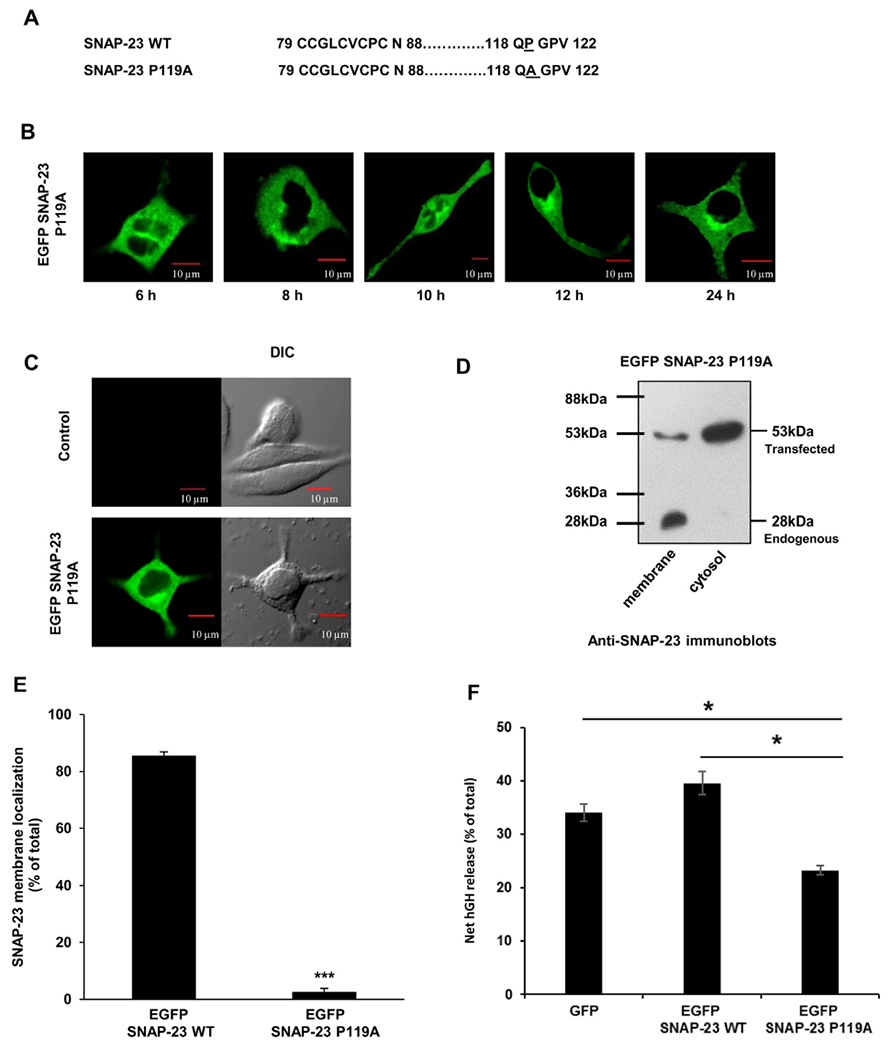Fig. 3.

SNAP-23 P119A mutant fails to traffic to the plasma membrane and affects RBL mast cell exocytosis. A. Amino acid sequence of the cysteine-rich hydrophobic domain of SNAP-23 WT and of the corresponding region of SNAP-23 P119A mutant. B. RBL cells were transfected with EGFP-tagged SNAP-23 P119A mutant. Transfected cells were plated on coverslips and analyzed by confocal microscopy after 6, 8, 10, 12 and 24 h post-transfection. Shown here are representative images. Scale = 10 μm. C. RBL cells were either mock transfected (control) or transfected with EGFP-tagged SNAP-23 P119A mutant. Twenty-four hours post-transfection the cells were analyzed by confocal microscopy. Shown here are representative images. Scale = 10 μm. D. Transfected cells were also analyzed by membrane/cytosol enrichment followed by immunoblotting with anti-SNAP-23 antibody. Here the representative immunoblots are showing the transfected as well as the endogenous protein along with the position of the molecular weight markers. E. Band intensities from three independent experiments were quantified by densitometry and expressed as SNAP-23% membrane localization with respect to total SNAP-23 (mean ± SEM), (***, p < 0.0005). F. The extent of hGH secretion is assayed by using hGH kit (discussed in materials and methods) in EGFP, EGFP SNAP-23 WT and EGFP SNAP-23 P119A mutant transfected RBL cells at 45 min after allergen cross linking. Each data point is a mean ± SEM of three independent experiments (*, p > 0.005).
